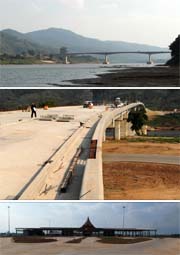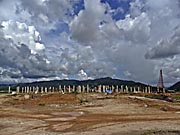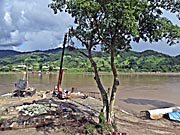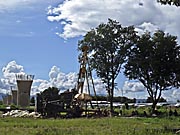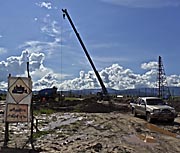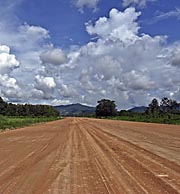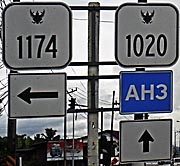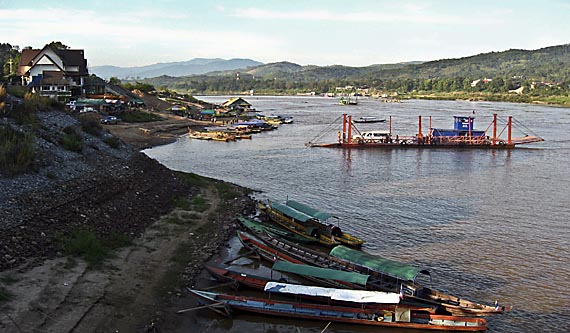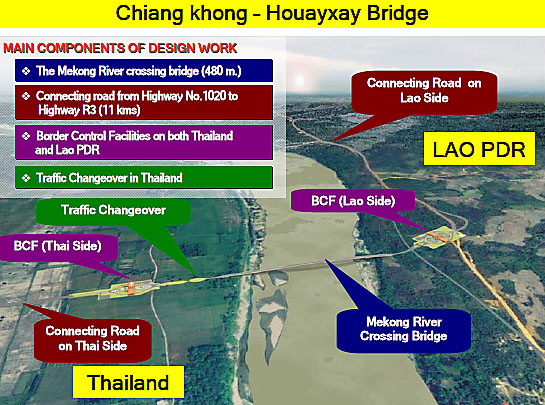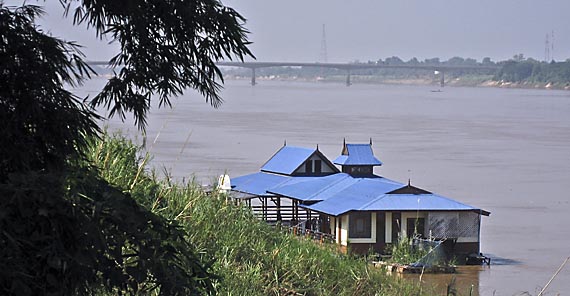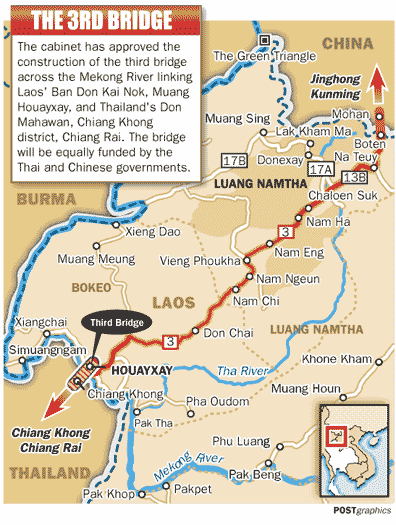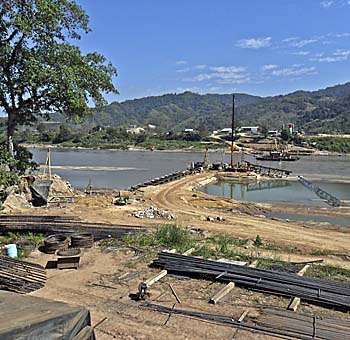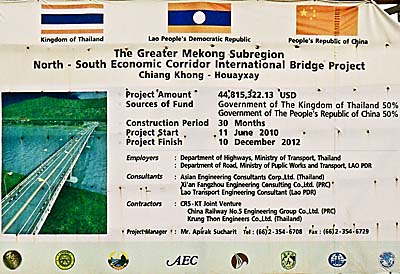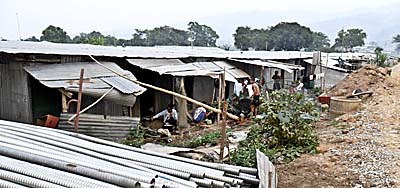Recent News:
The bridge over the Mekong River at Chiang Khong/Huayxai is completed now. Also the road connection to the main road (highway 1020) five kilometers south of Chiang Khong is done. Allegedly there was a ceremony at December 12th, 2012. For some people, according to the ancient Mayan calendar, the world would be destroyed at this very date, for others, particularly the Chinese, it's a symbol of luck. And luck means always, above all, good business.
Nevertheless, the bridge and new border-crossing is not in use yet. The immigration buildings on both sides are still under construction. In January it was supposed to be ready for operating in April 2013. But meanwhile there appeared another delay. Due to information I got from the custom officials in Chiang Khong, one of the construction companies has 'money problems'. It concerns probably to the construction of the new customs buildings. The officials told me that the new bordercrossing point will supposedly open in July 2013.

The new Thai/Laos friendship bridge as seen from the north on January 16th, 2013. Image by Asienreisender
March 16th, 2013
1.
Introduction
Southeast Asia's economies are booming since decades. Singapore reached the top of the development in the world region, followed by Malaysia and Thailand. Nevertheless they are still so called "developing countries". That means that they follow the pattern of Western modernization. Building up industries and infrastructure, forming a modern nation state with all the consequences for the people living there. Being competitive on the world market.
There is a history behind the bridge project, which is described here in short words.
In the 1960's the USA invested much money into Thailand, building it up as an ally against the communist movements in Vietnam, Laos, Cambodia and Thailand itself. Starting the Vietnam War, the USA gave initial input in the Thai infrastructure, particularly in Isaan, Northeast Thailand, where they built the first highways and other facilities for their military purposes.
After their eleven years lasting military engagement in Indochina the USA, militarily beaten, withdrew from the region. American investments declined in the region, due to the fear of American investors, the "Domino Theory" would become true and Thailand would become a Communist country. That was wrong, but the beginning was done, a basic infrastructure was created. In the 1980's Japanese companies came as investors, bringing much money and development into the country. But the economic growth was still limited. There was a Cold War Border between Western orientated Thailand and it's eastern neighbours. Cambodia was havoced by the Khmer Rouge. Laos, always a small, unimportant, forgotten country, was under a Communist dictatorship, any development was limited to Vietnamese and Chinese support. And Vietnam and China themselves where not strong, facing huge domestic problems. There was no thought of opening the eastern borders of Thailand for trade. In winter 1987\1988 there was even a border war between Thailand and Laos.
The situation changed in the early 90's, after the collaps of the Soviet Union and it's satellites. China was reforming it's system since 1978 already and made significant progress in developing the country. It joined actually the bad sides of Communism and Neoliberalism, meaning a radical relentless free market economy coming together with a one party dictatorship. This pattern now became the model for Laos as well. The Communist countries became willing and even keen on opening their borders for international trade, getting more competitive on the world market. As a result of this development the first Thai/Laos Friendship Bridge at Nong Khai\Vientiane is to see. From then on the countries were focusing on opening new trade routes for mutual benefits. Since the infrastructure is so thin, there are still many potentials. In this content the bridge and road project is to see. If it will fullfill the expectations, and especially by which costs, is a decisive question. More important seems actually the whole content of modernization and it's critics. But this would burst the story about the bridge, which is intended to be described here in rather short words.
